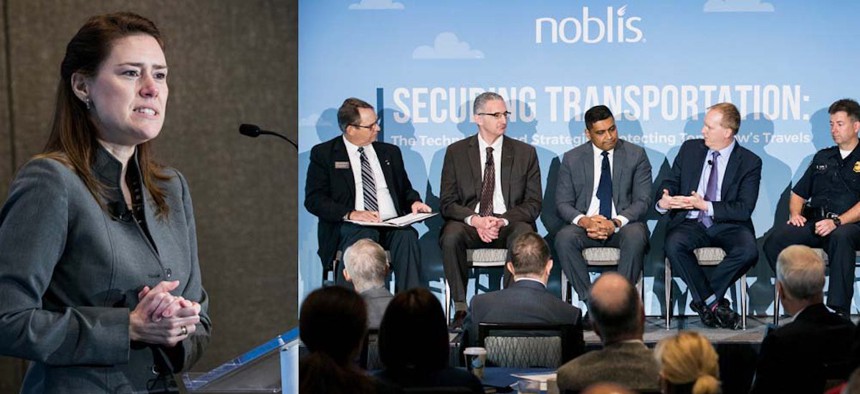sponsor content What's this?

Securing Transportation: The Technology and Strategies Protecting Tomorrow’s Travel
Key takeaways from leaders in the transportation security community on advancing national security solutions amid growing threats and the demands of modern passengers
Presented by
Noblis

Federal and industry leaders across the aviation and security communities are faced with constant risks and evolving threats. Agencies like Transportation Security Administration (TSA) and Customs and Border Protection (CBP) must collaborate with private industry and embrace a proactive approach to technology strategy.
On April 11, 2019, Noblis hosted a group of federal and industry leaders to discuss the daily threats and the proactive approach to technology that is instrumental in advancing national security solutions amid the growing demands of modern passengers.
In case you missed it, here are four key takeaways from the event:
1. Three major threats to aviation security stand out.
While there are many threats to aviation security, three stood out. There was considerable discussion about the “unknown adversary”—individuals who intend to do harm and are currently unknown by security agencies. People are being radicalized so rapidly that the security community must develop systems that will help agents and personnel on the front lines of security detect and learn people’s behavior to quickly identify new adversaries.
“Soft spaces” pose another threat to aviation security, which are the public areas in and around airports that do not require a boarding pass. Thankfully, current security processes make it difficult for people to get around TSA checkpoints without one. However, it’s because of access to soft spaces that TSA and CBP have become hypervigilant. Scott Johnson, Federal Security Director at Washington-Dulles International Airport, shared an example of a man who approached the airport in a stolen vehicle. He scoped out the baggage claim area for 30 minutes before trying to access a restricted area. Johnson emphasized the mass casualties that could have occurred if this man had been carrying a weapon. It’s potential threats like these that government agencies tasked with protecting our country must consider and answer through the development of better technology solutions.
During Johnson’s segment, he mentioned the importance of canines in TSA’s screening process. Dr. Christopher Smith, Director of the Transportation Security Lab at the DHS Science and Technology (S&T) Directorate, echoed this sentiment and discussed how some explosives, chemical, or biological threats may not emit detectable levels of vapor to alert security, and agencies need to develop more sensitive equipment that can detect very small trace amounts.
2. Facial recognition can help mitigate threats.
During the panel discussion, the collaboration between the Metropolitan Washington Airports Authority (MWAA) and CBP was discussed. The two agencies have worked together to develop new facial recognition technology that is currently being used by airlines.
Goutam Kundu, Senior VP of Technology and Chief Information Officer at MWAA, shared that this new facial recognition software was initially created to satisfy a Congressional mandate and is now being used to automate the identification verification process at TSA checkpoints. TSA officers can now verify passengers within seconds, increasing efficiency up to 50%. This allows security to get more people through the checkpoint, thus mitigating the number of casualties in the event of an attack. This new software also allows agents to quickly identify passengers as known adversaries.
3. Security is a community approach.
Aviation security involves multiple DHS components working together to safeguard the nation. Immigration and Customs Enforcement (ICE), TSA, CBP, and other government agencies must share intelligence information with one another because they all have similar goals. The development of the new facial recognition software is just one example of the kind of collaboration that can make a big difference in mitigating threats. The public is also part of this community, they are the last line of security defense. For example, passengers on a flight to Detroit, Michigan in 2009 apprehended the “underwear bomber” after his bomb failed to detonate.
4. Despite the advances in technology the human element is fundamentally important.
Panelists and speakers highlighted the importance of the human element. During his discussion about the transportation security lab, Dr. Smith talked about new scanning technologies being developed at DHS S&T and how they improve the screening process. He mentioned how TSA officers have only a split second to determine if an object is a threat or not. While technology may deem something a threat, it’s the officer that makes the final determination. It’s important to remember the benefits of the human agent, and how they work in tandem with the technologies to identify threats.
To see video highlights of these speakers and the event’s discussions, visit here.
To learn more about how Noblis helps government agencies in defense and homeland security, visit here.
NEXT STORY: Digital Government Unleashed






